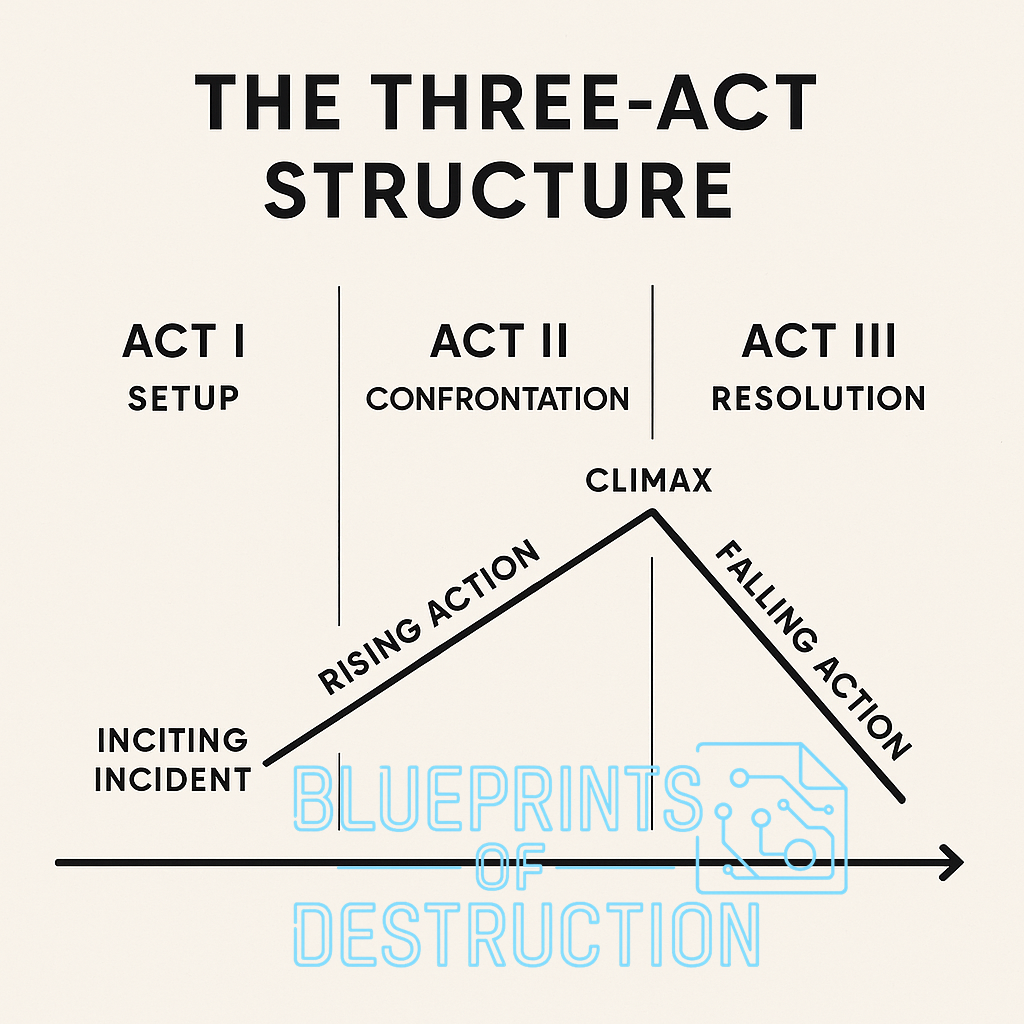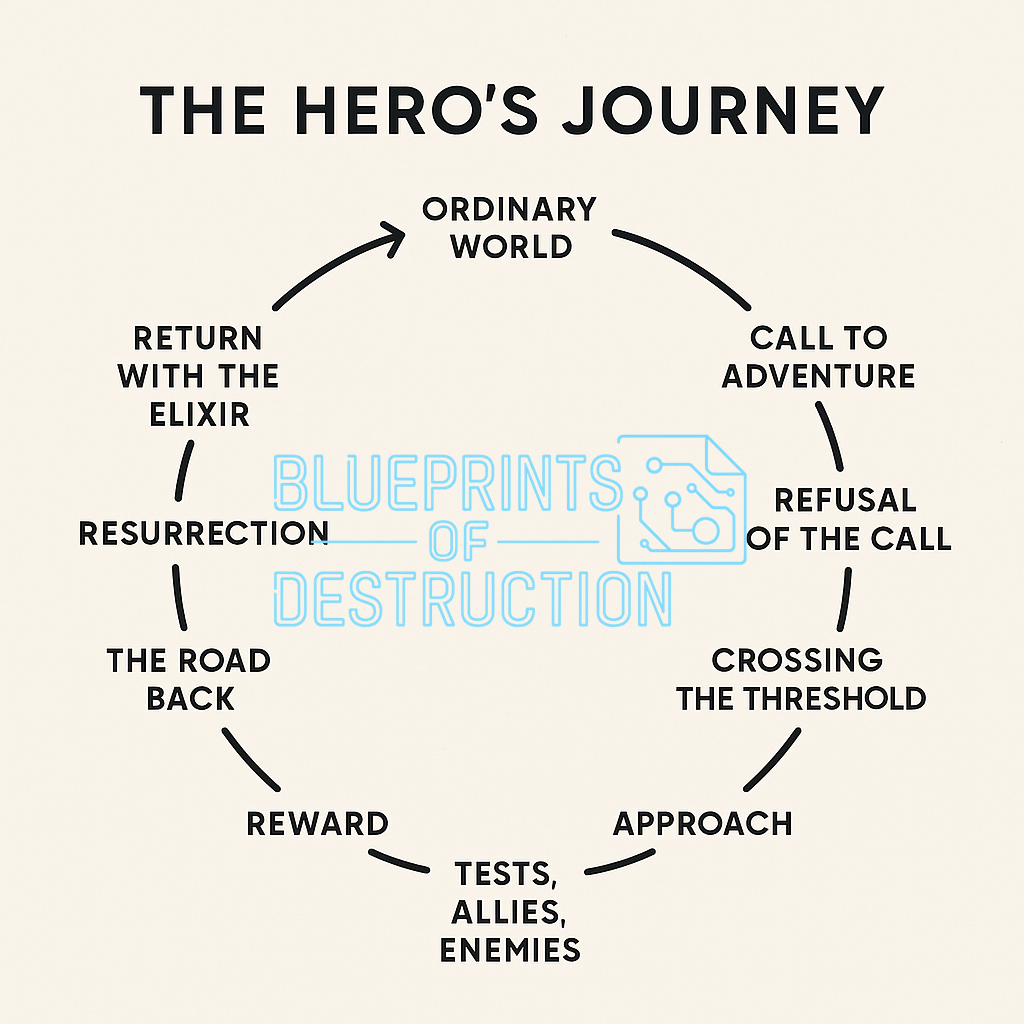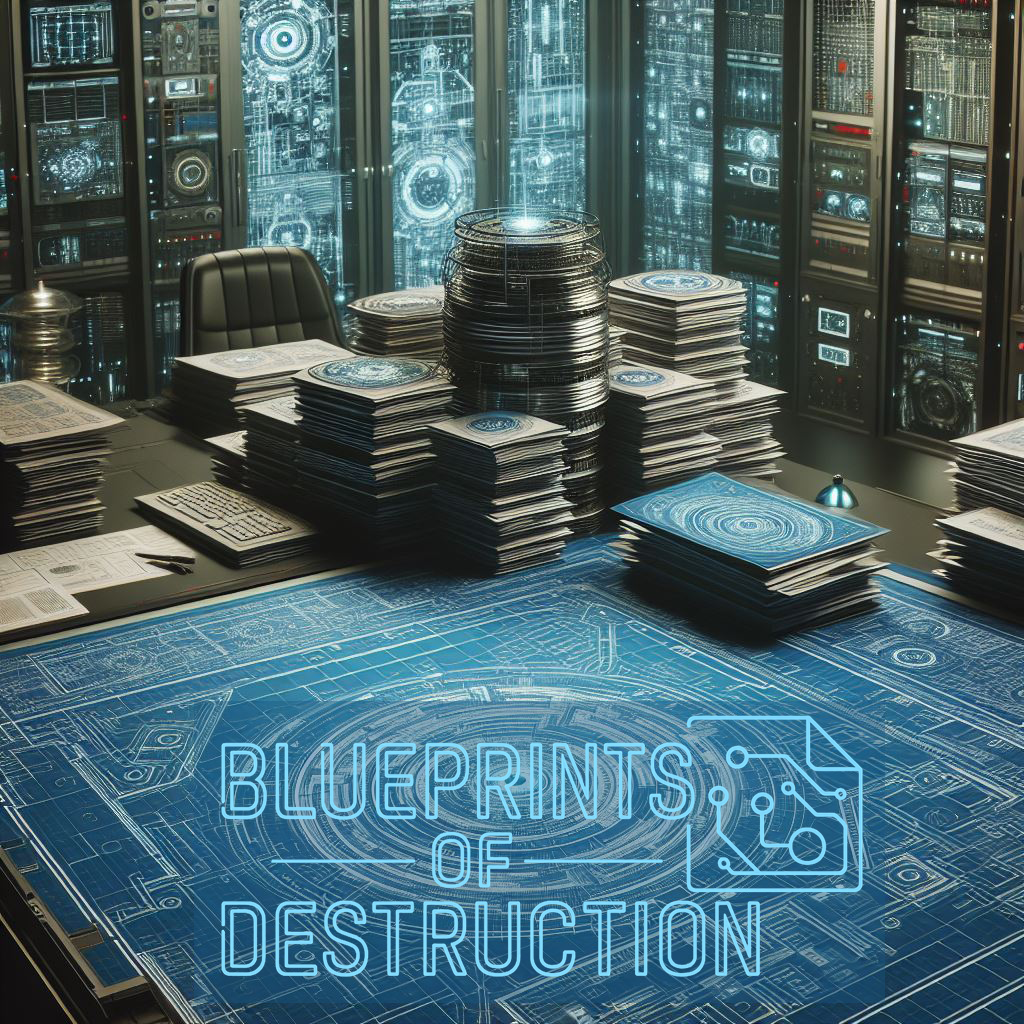- Home
- Writing a Story
- Plotting a Story
Plotting a Story
The importance of plotting a story with deep thought and cohesive framework that, once established, will help the other components of your story spring to life. Without a well-structured plot, the finer details of your worldbuilding might get lost in the confusion of a storyline whose narrative is scattered and unorganized. The plot is the infrastructure of the story, the building in which your characters act out their extraordinary lives.
There are many different methods for plotting a story. Let's take a brief look at some of the most common plotting structures to see what method best suits your writing needs. Keep in mind, the variety of plotting possibilities can be intimidating. This is totally normal, but don't let the volume of options overwhelm you! Sometimes simply picking one, and working with it for a bit, can provide enough insight so as to help you decide if it is a good fit for you.

Basic Methods for Plotting a Story
The Three-Act Structure

The three-act plot structure is possibly the loosest structure of all plotting methods, and generally provides the most relaxed and flexible approach to plotting a story. Each act, consisting of the setup, the confrontation, and the resolution, allows for nearly unlimited freedom for personal storytelling choices. While this is often a great place to start, you might find it tends to lead to one of the other methods, either because the plot of the story begins to take on more detail or because you find you need some additional assistance in getting from one act to another.
Sometimes a stricter outline helps shape the direction the story will take. If you are looking for a little bit more guidance, you may want to take a look at Freytag's Pyramid as a plotting method. It not only provides more depth to the structure, but it also offers a visible structure, showing the plot structure as a triangular (or pyramid) representation.
Freytag's Pyramid
Freytag's Pyramid technique is a system that shines through especially well in tragedies and literary fiction. It uses five stages to go from the exposition to the resolution (Exposition - Rising Action - Climax - Falling Action - Denouement). This method is often used in classical dramatic presentations, such as those that appear in theater. This could be considered the next step up from the simpler three-act structure, since it generally contains five parts. To take a leap to a more detailed process, you might go to The Hero's Journey.

The Hero's Journey
The Hero's Journey method is based on Joseph Campbell's mythic structure, which expands the three-act structure for greater clarity and design for the plot. Campbell presented this framework in his 1949 book, The Hero with a Thousand Faces.
The Hero's Journey takes the three-act structure and breaks it down into twelve steps (At least if you follow Campbell's original design). It is especially useful for epic quests like fantasy and adventure. This is usually used in storylines that are generally considered circular (Departure - Initiation - Return).
While The Hero’s Journey offers a mythic and expansive structure, it may feel too symbolic or open-ended for some writers. If you’re looking for something more modern, with clear steps and tighter pacing, the Save the Cat! method is a great next option.
Save the Cat!
The Save the Cat! method (also known as the Save the Cat! Beat Sheet) was developed by Blake Snyder in his book, Save the Cat! The Last Book on Screenwriting You'll Ever Need. Snyder uses pivotal story points known as "beats" to plot out a well-paced story. Save the Cat! is another great option for plotting a story, and provides a different approach for breaking down the three-act structure. It breaks the three-act structure into fifteen beats, which provides some amazing direction when it comes to plotting a story, and is often considered a linear structure (Act I - Act II - Act III).
While Save the Cat! is not completely inflexible, it is definitely more tightly structured. This can assist an author who either does not have a solid feel for how to lay out the plot, or someone writing within conventional timing. There are certain aspects of this method which are meant to be followed closely. If you are looking for a plotting method which provides you with step-by-step points to follow, Save the Cat! might be just what you are looking for.
If you want to take an even deeper dive into a method for plotting a story that also helps direct your characters' intentions, you should consider the twenty two steps John Truby developed.
John Truby's Twenty-Two Steps
John Truby's twenty-two steps for plotting a story are based around character transformation, moral growth, and cause-and-effect. Truby's Book The Anatomy of Story is a fantastic resource in understanding the relationship between plot and character development. This structure was originally designed for screenwriting, as was the Save the Cat! method. Having said that, a good story is still a good story, and these methods translate well to novel writing.
All of the preceding methods for plotting a story are traditional, well-developed systems for laying out consistently formulaic stories. While these methods are highly customizable, they still fall within the purview of stories written by an author. If you are interested in a story with a journey that takes you, as the author, along for just as exciting an adventure as your readers, you may consider the Randomly-Generated-Plot-Device.

PhranqenLu's Randomly-Generated-Plot-Device
The Randomly-Generated-Plot-Device method (known here as RGPD for short), when used for plotting a story is an augmenting modifier for the other plotting methods. When you find one of the other styles, applying the RGPD can supercharge your story into new dimensions. It can cause the very act of writing your story to be injected with the same level of excitement normally reserved for the first-time reader.
Regardless of whether you choose to use RGPD with the hero's journey or with Truby's twenty-two steps, the real powers in good storytelling are both the ideas that stay concealed inside your mind, as well as the unexpected twists and turns that RGPD provides. Overthinking which method of plotting a story is best for you, or even trying to plot and re-plot your story won't help to get your ideas into the world any sooner. The most important method that you can use is the method of putting words on paper. Whether it's pencil on a spiral notebook or the clicks of a keyboard on your laptop, write, create, and enjoy. You can do this!